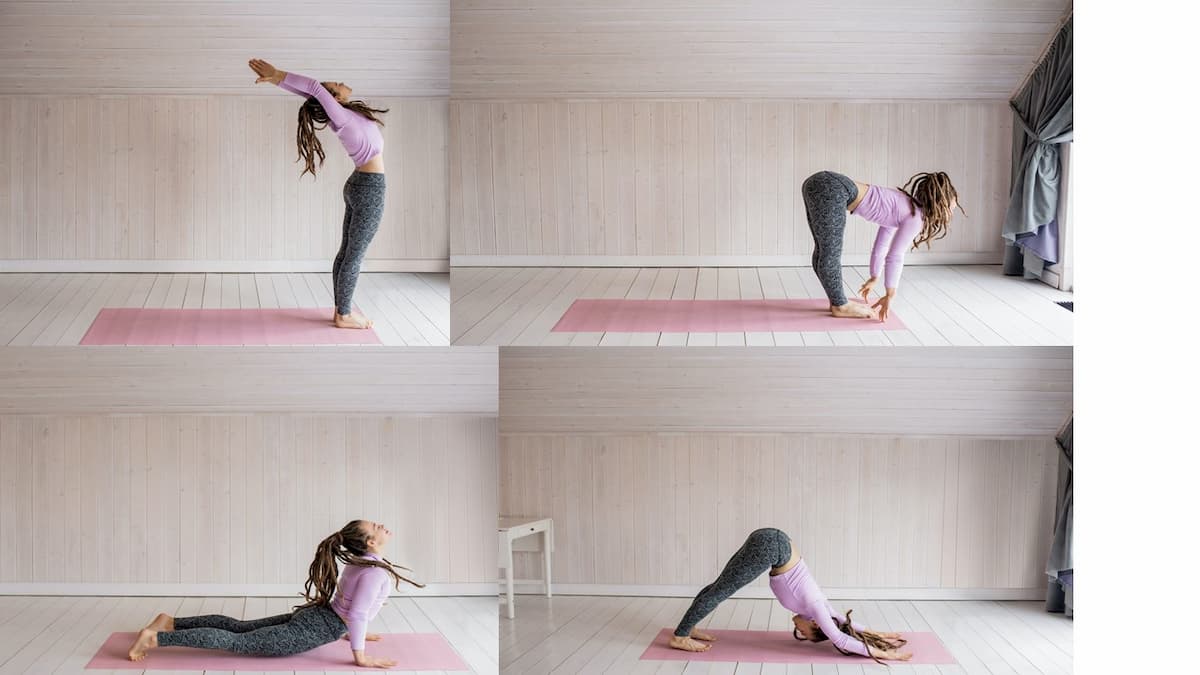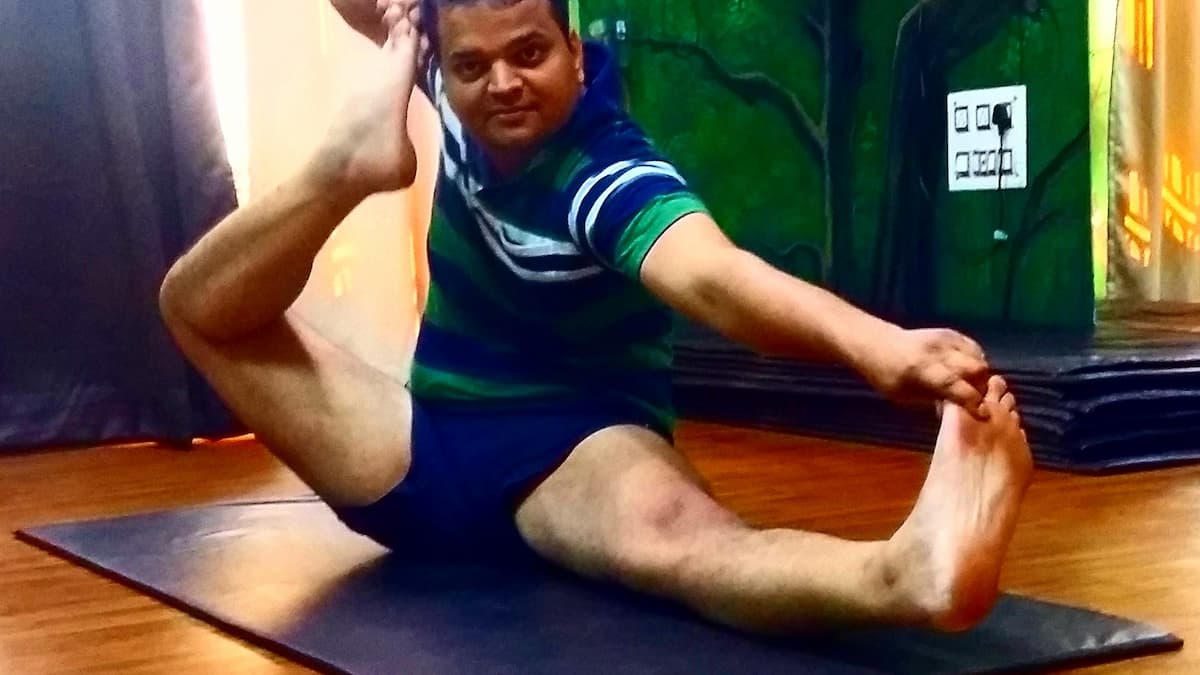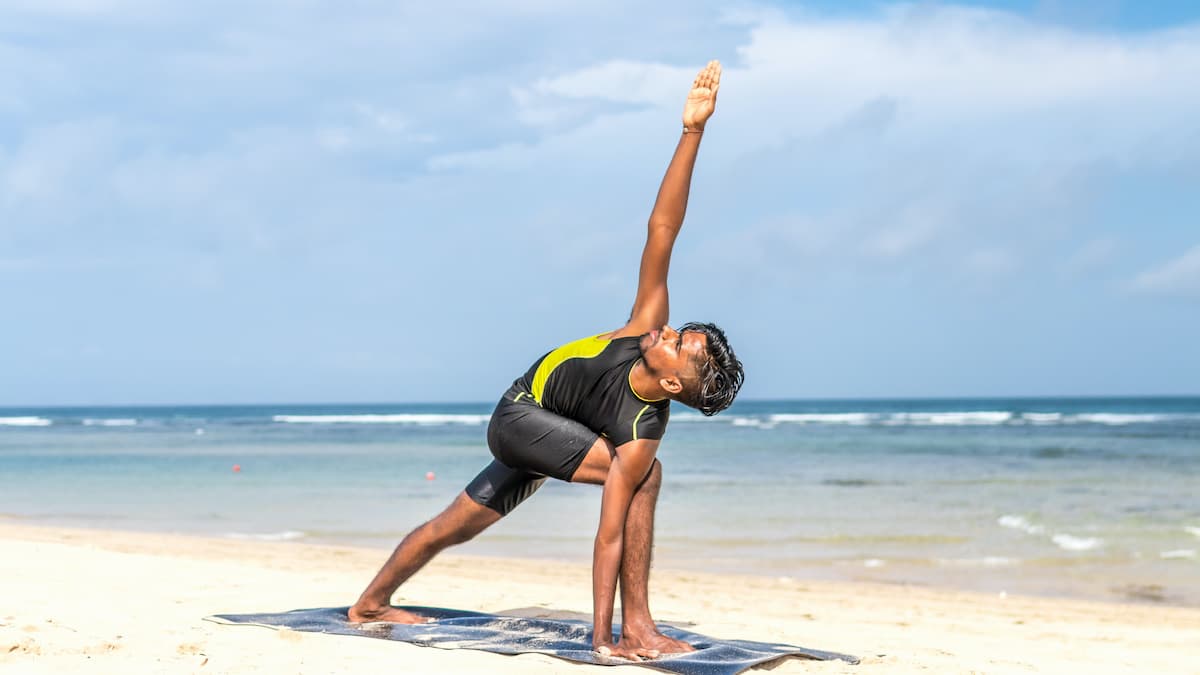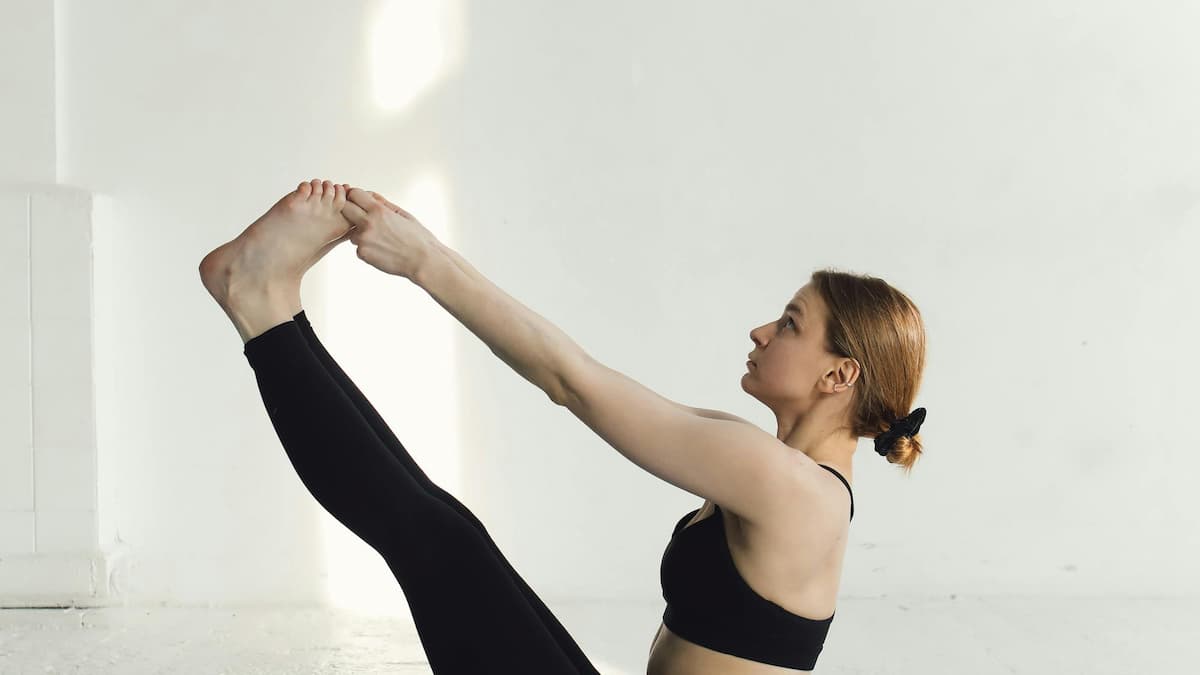Introduction
Sun Salutation or Surya Namaskar is one of the most popular Hatha Yoga sequences. The peculiarity of this sequence lies in the fact that it is beginner-friendly and yet gives the benefits of advanced yoga practice. In other words, a beginner can easily master this sequence and get most of the benefits that an adept yoga practitioner gets. If for any reason, one could not find time to practice many yoga poses, it is enough for him to practice a few rounds of this sequence that will make him fit and healthy.
In the system of Suryanamaskara are combined several postures with rhythmic breathing, rapid movement, sunbathing, and prayerful contemplation of divine power that the sun represents.
Swami Sivananda
This article is a comprehensive guide that attempts to answer all the queries on Surya Namaskar.
Surya Namaskar Information
| Name | Surya Namaskar Surya Namaskara |
| Sanskrit Name | सूर्यनमस्कार |
| IAST | sūrya namaskār |
| English Name | Sun Salutation |
| Difficulty Level | Moderate |
| Type | Dynamic Sequence |
| Origin | Indian Traditional Yoga Practice |
Importance of Surya Namaskar
Sun Salutation is a universal kind of exercise suitable for all ages, children, women, and men. Furthermore one can get mastery the practice without spending much time and effort. It is a complete set of yoga poses that won’t require any counterposes. The sequence itself covers the required counterposes. It requires no instrument, companion, or suitable weather conditions as it is in the case of other exercises like walking, swimming, etc. Yet it provides comparatively more benefits with less effort and time.
Unlike other exercises, it tones up the whole body. Just compare it with walking. Walking involves only legs and arms. Sun salutation involves arms, legs, the entire spine, and the neck. Hence it is an ideal exercise with all-around development for maintaining a healthy body and mind.
What is Surya Namaskar in Yoga?
Surya Namaskar Meaning
सूर्यन (Surya) means Sun. It also means Sun God in Hinduism. नमस्कार (Namaskar) means Salute. Hence Surya Namaskara means Sun Salutation. It is a prayer offered to Sun God with a specific yoga sequence. In the traditional prayer, it is offered to Sun God with Mantras. However, it is different from Aditya Hridyam, a Sun Salutation described in the great epic Mahabharata.
Surya Namaskar Origin and History
No yoga text before the nineteenth century did talk about Surya Namaskar. This is because it was then not a part of Yoga Practice. It was inducted into the yoga stream in the early nineties only. Before that, it was a part of Kalarippayattu, an ancient martial art practice that prevailed in Kerala and Southern Tamilnadu of South India. The Kalari version of Sun Salutation is more challenging than the yoga version.
In the Nineteen-twenties, King Bhawanrao Shriniwasrao remodeled the Sun Salutation with a sequence of yoga postures. He was a ruler of the princely state Aundh of the British Raj (1909-1947). The remodeled version contains ten postures only.
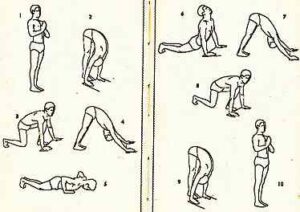
In his book The Ten Point Way To Health (1928), Shri Bhawanrao narrated that his father had been practicing Sun Salutation for more than fifty-five years. However, the Sun Salutation he practiced was the traditional one with Mantras and Vedic hymns. Shri Bhawanrao remodeled the traditional Surya Namaskar with ten steps (see picture). This was how the modern Sun Salutation came into being. All versions of Sun Salutations (except Kalari versions) being taught by different yoga schools today are modified versions of this ten-step sequence only.
How to Do Surya Namaskar?
The ten-step Surya Namaskar as taught by Shri Bhawanrao Srinivarao is explained here.
Position One
Spread a blanket on the floor where there is sunlight. Stand erect facing sunlight with knees together. Join hands with palms pressing each other and resting on the chest. Raise the chest and pull the abdomen in and up as far as possible. Make your spine as straight as possible. Stiffen the whole body starting from the feet. Start with the toes and move gradually up to the top of the head. Concentrate on each part that you stiffen. Do this slowly. On reaching the shoulder, proceed to the fingertips concentrating on each and every tip. When you come to concentrate on the head, smile gently. Inhale as you start stiffening. Hold your breath until you start the next position.
Position Two
Keeping knees straight, drop the hands to the floor. While doing this exhale and squeeze in the abdomen. Place the palms on the floor. If you could not reach the floor with unbent knees, just try your maximum. But don’t bend the knees. With regular practice, you can do this within a week. The palms should be placed almost parallel to the sides of the legs. While bending, try to touch the knees with the forehead or nose. Now turn your eyes upwards towards the waist.
Position Three
Inhale deeply and hold your breath. Without bending the arms, drop the right knee and lift the head as high as possible, looking upwards. Touch the floor with the right knee and toes. Press the left thigh as hard as possible with the side of the body.
Position Four
Still holding your breath and keeping the arms and legs, raise the body and push the left leg to join the other leg. Then bend the head towards the chest. Gently force the heels onto the floor. Now your body should form an inverted V.
Position Five
Keeping the hands rooted, drop the body flat on the floor. The forehead, nose, chest, knees, and toes should touch the floor. But not the hips and abdomen. Exhale drawing in the stomach while dropping. Keep the hips and abdomen as high as possible. Now, the whole of the body is supported by palms, wrists, and forearms.
Position Six
Now inhale and straighten the arms. Curve the back throwing the chest out. Then stretch the neck back as far as possible and look at the ceiling. Now hold your breath. The weight of the body is carried by the arms and toes.
Position Seven
Starting from position seven, complete the cycle by repeating the first four positions in reverse order. Position seven is similar to Position four. As far as breathing is concerned you are still holding your breath,
Position Eight
Position eight is similar to Position three except for the leg position. Instead of kneeling on the right knee, kneel on the left. Still hold your breath.
Position Nine
This position is similar to Position two. Exhale during the position.
Position Ten
As we have already seen, position Ten is similar to Position one. Inhale while you are lifting the body.
Breathing in Surya Namaskar
Different styles of Sun Salutation follow different breathing patterns. The breathing pattern in the Ten Point Sun Salutation is tabulated below.
| Position | Breathing |
|---|---|
| 1 | In |
| 2 | Out |
| 3 | In |
| 4 | Hold |
| 5 | Out |
| 6 | In |
| 7 | Hold |
| 8 | Hold |
| 9 | Out |
| 10 | In |
Precautions and Contraindications
Let us see who should not practice Sun Salutation.
Persons having health conditions like lower back issues, cervical spondylitis, and hernia should consult their doctor before starting this practice. Apart from this, persons who have recently undergone any surgery should also consult their doctor.
Pregnant ladies and ladies undergoing periods should avoid this practice during those times.
During the practice, the left thigh exerts pressure on the spleen and the right thigh on the liver. Hence persons having liver or spleen disorder should consult a competent yoga teacher/doctor.
Surya Namaskar Types and Variations
So many variations have evolved out of the above-mentioned ten-step Sun Salutation sequence. Let us have a look at the important ones.
Sivananda Surya Namaskar
Swami Sivananda founded Yoga-Vedanta Forest Academy to disperse the knowledge and practice of yoga in the year 1948. Sivananda Schools teach a twelve-step Surya Namaskar. Bihar School of Yoga also follows this twelve-step sequence.
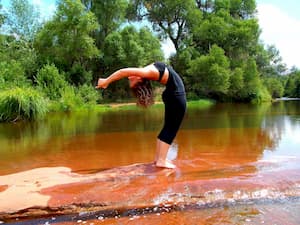
In the above ten-point Sun Salutation described above, the following step is inserted as the second and eleventh positions.
Position Two and Eleven
Inhaling, stretch your arms up and arch your waist back. Keep the legs straight and push the hips out.
Surya Namaskar in Ashtanga Vinyasa Yoga
Ashtanga Vinyasa Yoga is a style of yoga created by K. Pattabhi Jois. It is different from traditional Ashtanga Yoga. The latter is a branch of yoga with higher importance created by ancient Rishies and Yogis.
In Ashtanga Vinyasa Yoga, there are two variations of Sun Salutation. Surya Namaskar A and Surya Namaskar B. The former contains ten positions and the latter has nineteen positions.
Frequently Asked Questions
No. It is not advisable. For a long answer, refer to Can we do Surya Namaskar during periods?
No. You shouldn’t. Generally, pregnant ladies should not take practice any forward-bending or back-bending yoga postures. Sun salutation contains many postures of both forward and back bending types. Hence you should not do it during pregnancy.
It depends a lot on the weight of the person. However, an average person burns approximately 13.91 calories in one round.
Again it depends on the speed at which it is performed. However, it takes 3 minutes and 40 seconds approximately when performed at a moderate speed.
Traditional Sun Salutation is done only in the morning when the sun is about to rise. As a prayer, one should perform in the morning facing east. Also one can perform San Salutation in the evening facing west. When one performs Sun Salutation solely for the purpose of health and fitness, he can choose the time of his own choice. However, one should not perform the sequence immediately after a meal. There must be at least three hours gap after a meal.
It straightens the spine and neck. Also, it reverses the crunch. This results in a height increase. For teens and growing children, it helps to increase height.
More Articles On Surya Namaskar
The following articles shed more light on Sun Salutation.
- Surya Namaskar Benefits
- Surya Namaskar and Weight Loss
- Can We Do Surya Namaskar during Periods
- Surya Namaskar with mantra
